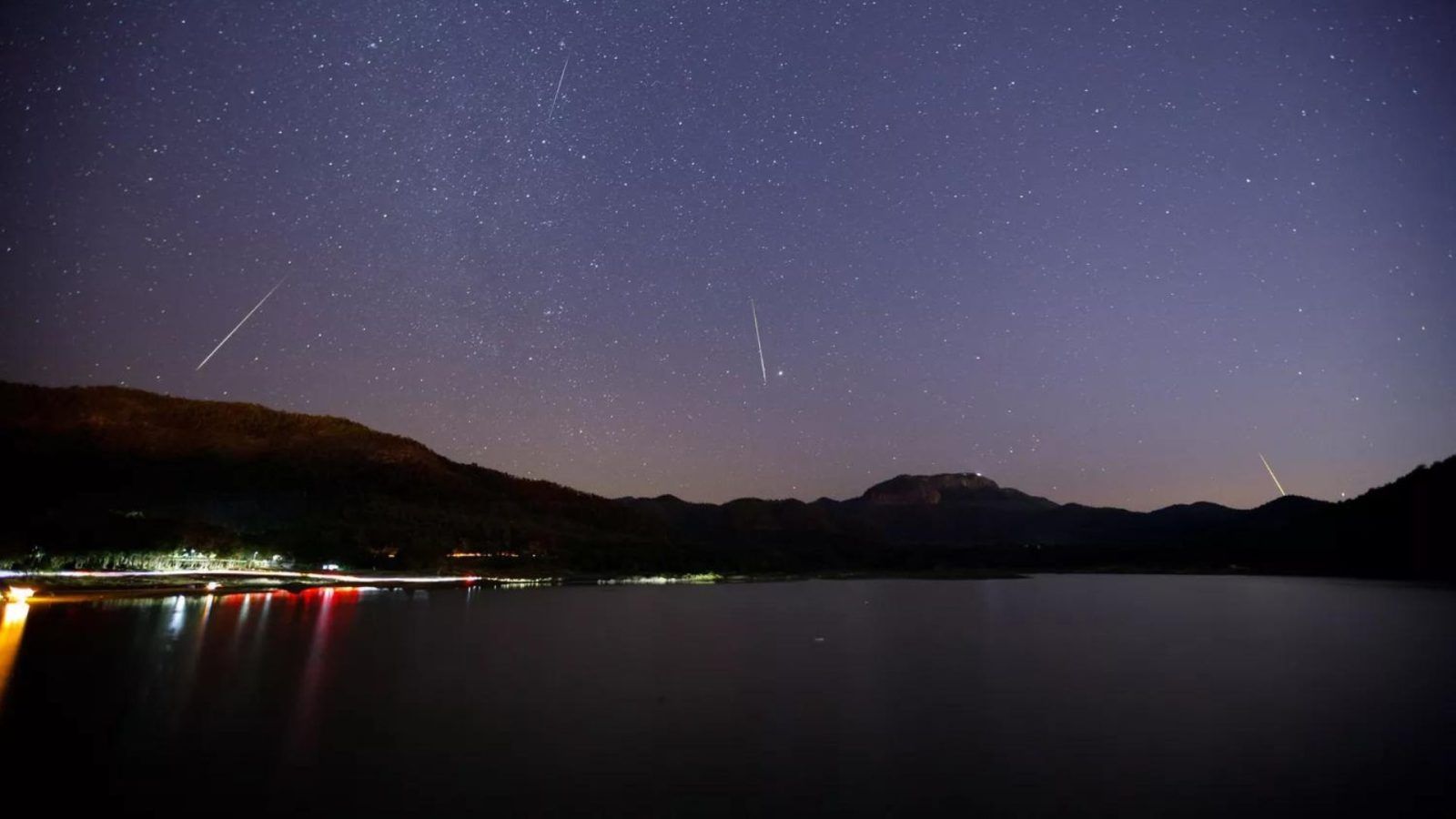January is a traditionally milder month for stargazing — particularly compared to the year’s main event, April’s solar eclipse. Yet, with two meteor showers, a plethora of planet sightings, and potential auroras, January’s night skies do warrant a few hours of missed sleep.
The month marks the predicted beginning of “solar maximum,” our current solar cycle’s roughly 11-year height of activity. This means a boom in northern lights sightings, which the National Oceanic and Atmospheric Administration says will likely extend from January to October 2024. Even better: this year’s solar maximum could produce the most powerful northern lights displays in decades. (Here’s how to take advantage of it, from the best northern lights hotels to bucket-list aurora borealis destinations.)
Even if you can’t jet set to chase the lights, January has a bounty of night-sky marvels you can see closer to home. From shooting stars to prime planet sightings, here’s what to watch for this month.
Planet sightings, meteor showers and other astronomical events to watch in January 2024
January 4: Quadrantids Meteor Shower Peak
Every year, the Quadrantids meteor shower lights up the sky from around Dec. 26 through Jan. 16. This year’s peak will occur in the early morning hours of Thursday, January 4, at roughly 4 am ET (4:00 pm ICT). According to SkySafari, this pre-dawn display could see anywhere from 50 to 100 meteors per hour in the northern half of the sky. The best viewing time in the Americas will be around midnight before the half-illuminated moon rises.
January 9: Moon Meets Venus, Mercury, and Mars
The southeastern sky will welcome a Who’s Who of interstellar favourites the morning of January 9: Mars, the crescent moon, Mercury, and Venus. Our solar system’s brightest planet, Venus, will glow at the top of the quad, with the speck of Mercury to the bottom left, the moon to the bottom right, and rust-tinged Mars hovering near the horizon. Try stargazing binoculars or a telescope to enhance your view, but point them away from the eastern sky before sunrise.
January 12: Mercury Reaches Greatest Western Elongation
Start your weekend with one of the best Mercury sightings of the year. In the pre-dawn hours of Friday, January 12, Mercury will hover at its widest angle west of the sun, according to SkySafari. You can see it low in the southeastern sky, roughly 1.2 fist diameters down and left from vivid Venus. Continue admiring Mercury, our solar system’s fastest-moving planet, throughout the week.
January 18: Jupiter Nears the Moon
See the first quarter moon approach Jupiter on the evenings of January 17-18. According to EarthSky, the duo will hang out in the southwest sky before setting around midnight. See the Pleiades star cluster above and left of the moon. If you have a pair of binoculars handy, look for aqua-tinted Uranus halfway between the moon and Pleiades.
January 19: γ-Ursae Minorid Meteor Shower Peak
While the γ-Ursae Minorid meteor shower is less active than the Quadrantids, it is worth pursuing if you miss the early January display. The shower peaks around 5 pm ET (5:00 am ICT, the next day) on January 19. Watch near the Ursa Minor constellation that night and evening to see up to three meteors per hour. Given the bright moon, and the minor activity, you’ll need a dark sky with low light pollution to enjoy the show; for that, try a park or stargazing hotel.
January 25: Full Wolf Moon
The first full moon of the year will hit peak illumination at 12:54 pm ET (12:54 am ICT, the next day) on January 25, according to The Old Farmer’s Almanac. The full wolf moon—the name for January’s bright orb—will rise above the northeastern horizon around sunset. This moon’s name stems from the belief that wolves are likely to be heard howling at this winter moon due to hunger.
Shop the best travel experiences here
(Feature image credit: Getty Images)
This story first appeared on travelandleisure.com
Related: The Best Northern Lights Cruises

Shambhu Kumar is a science communicator, making complex scientific topics accessible to all. His articles explore breakthroughs in various scientific disciplines, from space exploration to cutting-edge research.


